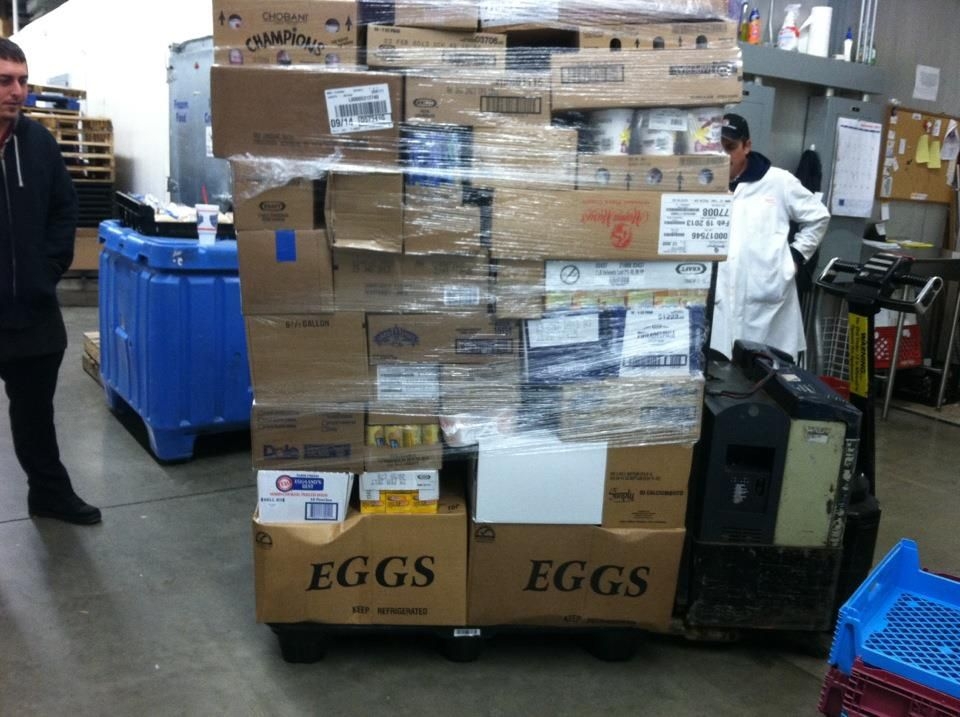Building Walls for Protection
Pick Line Sequencing Cuts Costs by Eliminating Damage and Loss
Opportunity:
 A small consumer products retailer shipped merchandise on pallets from DC to store. Both large and small goods were picked to pallet from the same pick line. Smaller and fragile items would be lost or damaged in transit when packed onto the pallet with the larger items. The retail associates complained about being injured by unstable pallets.
A small consumer products retailer shipped merchandise on pallets from DC to store. Both large and small goods were picked to pallet from the same pick line. Smaller and fragile items would be lost or damaged in transit when packed onto the pallet with the larger items. The retail associates complained about being injured by unstable pallets.
Solution:
All of the shipments from this distribution center went one way to the retail stores, so using returnable totes was not a solution. The pick lines were slotted in a random order with no attention to order velocity or to the size of the cartons or pieces. Order pickers were challenged to pick small merchandise mixed in with large merchandise onto the shipping pallets. In our observations we found that almost one-third of the pickers’ time was spent rearranging merchandise on the pallet so it would ship intact to the retail customer.
Our solution focused on slotting the pick lines based on two key criteria: first, the physical characteristics of the merchandise, and second, the order frequency and velocity of the specific items. We classified the physical characteristics into three types of merchandise: base, walls, and filler. We reordered each of the pick lines so that large merchandise was picked first, allowing the picker to build a solid, heavy base as the initial layers on the pallet. The next group of merchandise on the pick line were the walls. Pickers would arrange cartons of merchandise around the perimeter of the pallet. Finally, the last section of the pick line would fill the void in the middle of the pallet, thereby cushioning the small, fragile products within the larger freight.
Within each of the physical groups, we arranged the merchandise so that high pick frequency product in each group was spread through the zone, eliminating congestion when multiple pickers worked within the same pick line.
Result:
In this five-day engagement, we used one day for observation and two days for data analysis and the physical reset of the “test” pick line. We observed the pickers over the course of another two days and established that productivity had improved by almost 50 percent. In one week, we:
• Delivered slotting rules that addressed damage to the merchandise and improved productivity
• Created a simple analysis spreadsheet to help re-slot a pick line based on the new rules.
Engagement:
One Week
Deliverables:
Interactive Observations, Process Development,
Analysis Spreadsheet
of Pick Order,
Brief report of
Findings & Solution
Investment:
$10,000
Plus Expenses
ROI:
6 Weeks
Do you want to know how the order of merchandise on your picks lines can increase
productivity and increase profitability? Give us a call and let us talk about an initial, no obligation assessment.
 Hello! My name is Dave Schneider, I'm the founder and publisher of We Are The Practitioners.
Hello! My name is Dave Schneider, I'm the founder and publisher of We Are The Practitioners.
It is a complex world. We help simplify it. I'd love to help you simplify your business supply chain challenges.
Give me a call anytime at 877-674-7495
David K Schneider & Company - We Are The Practitioners.com - The Hornbaker Works
9026 Hornbaker Road, Manassas, VA 20109 - PO Box 230457, Centreville, VA 20120
info@ DKSCO1.COM - (877) 674-7495


